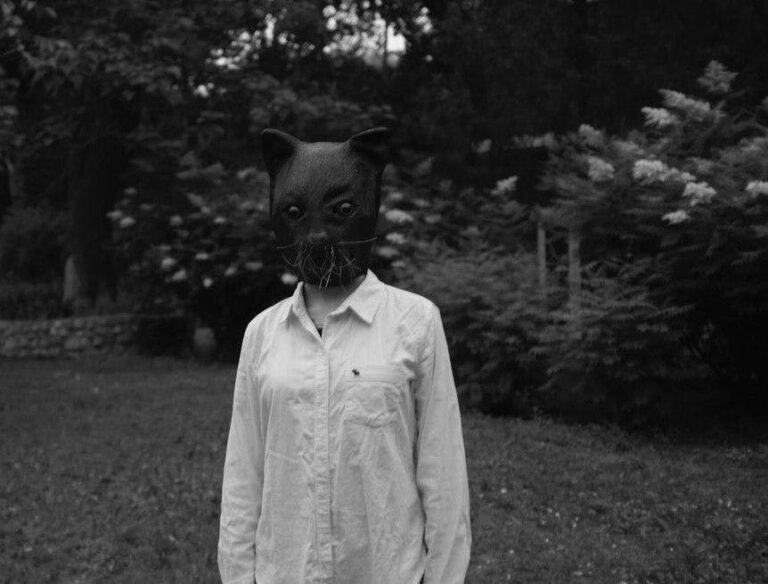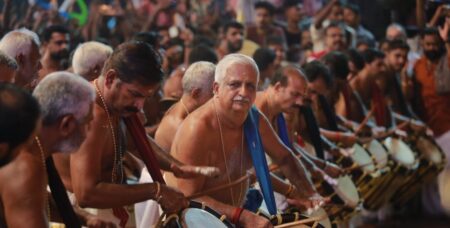Move over werewolves and Halloween pranksters; Odiyan, Kerala’s legendary shape-shifter has been petrifying people for generations.
his is no costume party. There is no trick or treating. This is purely a grown-up’s business — the kind that makes the hair on the back of your neck stand up. The kind that will put JK Rowling’s wizardry, JRR Tolkien’s characters and their abilities, and even Manoj Night Shyamalan’s scripts in the shade.
Enter Kerala’s legendary Odiyan. For starters, here’s a glimpse: imagine somebody following you creepily at night in a lonely place and all that you hear is a clucking of hooves. Soon, you meet a human figure with pair of, yes, hooves! Scared yet? Such bone-chilling tales permeated Kerala’s Valluvanad region during the 1950s and 1960s.
Valluvanad, comprising the modern-day Malappuram, Palakkad and Thrissur districts, is a culturally fertile geography capital where the river Bharathappuzha has enriched and encouraged various artistic and aesthetic pursuits. The culture that permeated this area is more or less similar to paganism where snake charmers, folk songs, occult worship and dark magic rendered it exotic and mysterious.
The ethnographical features of this particular area transformed it as a treasure trove of indigenous beliefs and practices and as a unique plethora of unnatural tales and incidents. While it is the home for a million forms of goddess Bhagavathy and the velichappad (oracle), its nights are made dark and sinister with Odiyan, a shape-shifter or an animagus like in the JK Rowling’s Harry Potter books.
Thriving in the ‘Dark’
In the mid-half of the 20th century, Kerala never followed a Veda inspired Hinduism but rather a particular kind of beliefs and rituals that easily amalgamated the unique and spectacular ethnographic necessities. While the rigid class and caste system were prevalent in the Northern areas, the southern end, especially the tip of the sub-continent, enjoyed an altogether different kind of class system that made it possible for the higher sections of the society to avail themselves the luxuries that life offered them.
The underdogs or the socially ostracized section never had any visibility or prominence and were pushed further and further into darkness. This created a lacuna in their lives where they had to struggle hard to make ends meet. The inherent darkness that they were pushed into resulted in the origin of the mythic or the superstition of Odiyan.
The areas surrounding the river Nila have seen the wonderful proclivities of an Odiyan. Lurking stealthily in the darkness of nights, an Odiyan patiently awaits his victim either to be killed by snapping his spine like a stick (odikkal means to break) or to scare the living daylights out of somebody. The folklores surrounding these shape-shifters always ended in death or destruction.
Hailing from the Valluvanadan area, such tales of ‘odimarayal’ (the act of transforming) and treachery have made my childhood memories imaginative and worthwhile – my maternal grandfather has played a quirky part in transforming it into an eerie and spectral experience. He is from the land of Odiyans where a whole area existed where people never dared to venture even in broad daylight. While growing up, he used to tell us, children, all these wonderful tales of shapeshifters and hyena cries that gave us goosebumps. Whether it’s folklore or superstition, I had this rare opportunity to listen to his experience about the sinister activities of this Ninja clan, Odiyan.
The pre-electrification and the pre-police era have immensely helped this clan to thrive and wander the nights spreading panic. Not only animate, but they also can transform themselves into inanimate objects, too, like a stone or a pillar and lure their victims into their doom. Numerous opinions and tales surround their ability to transform into the desired form. ‘Odimarayal’ or the very act of transforming is intensely hazardous and a gruesome process, which requires a special oil. Only by smearing it behind the ears, one can transform into a bull or a rock.
The effect of this transfiguration is effective till sunrise only. The preparation of this oil is said to have required an unborn fetus. It is common lore that pregnant women of those times were really scared to venture outside after sunsets and were always warned by the elders not to answer if someone calls you by your name. Thrice an Odiyan will call your name and if you answer it once, you will fall into his spell where you will be lured to come outside and be used by him.
Gory details alert! It is widely believed that the occult activities of the Odiyan clan need the unborn child and therefore tails pregnant women. These women apparently aren’t even aware of the daze they are in and are discovered dead without any symptoms.
Light Playing Tricks
Yet another phenomenon that surrounds this Odiyan fable is the ‘Potty choottu’ or the flames that fool night travellers (choottu is the lamp made out of burning dried coconut leaves). I have heard from my grandfather that such sinister lights have been used by Odiyan to lure the travellers into his den. The will-O-Wisps or the greenish-blue bog lights of Ireland or the jack-o-lanterns and the hinkypunks of the western worlds can be connected with the Potty Choottu concept.
The Marfa lights of Texas, Thai Naga fireballs, the Norwegian Hessdalen lights, West Bengal’s Aleya lights of the Sundarbans and the Kutchi Chir batti of the Banni wetlands all point towards the intriguing and confounding lights that have fooled men into following them. The scientific explanation for such tricks is the presence of sulphur fumes that burns bright in the nights but the Valluvanadan mythic trove connects it with Odiyan and his main weapon in luring people towards him. Those times demanded travelling on foot and night journeys proved really cumbersome with the threat of such tomfoolery done by the Odiyan folks. Some lost sense of direction by following those lights that began moving further and further away as one tried to reach it.
There were incidents where one of the farm help walked till sunrise following the lights and was not nearly anywhere near his destination.
Whether taken as a myth or as a superstition, Odiyans loom large in the Valluvanadan collective unconscious. The people who did this occult or black magic always belonged to the lower strata of the society where economically or socially or culturally, they were the underdogs. The social ostracization imposed upon them took away whatever visibility and prominence that they enjoyed. The untouchability along with widespread household talk of how one shouldn’t even see a person belonging to this class must have made the clan draw power through such occult activities.
There are people who argue that Odiyans wore animal skin (scavenging burden was also upon them) and scared people or they were skilled illusionists who could make people imagine a man as a bull or a dog. Modernization and the subsequent impact of education led to the death of Odiyans and along with them, their secrets. Coming to know about such tales make one doubt whether Magical Realism began in the South-West most tip of this country!




